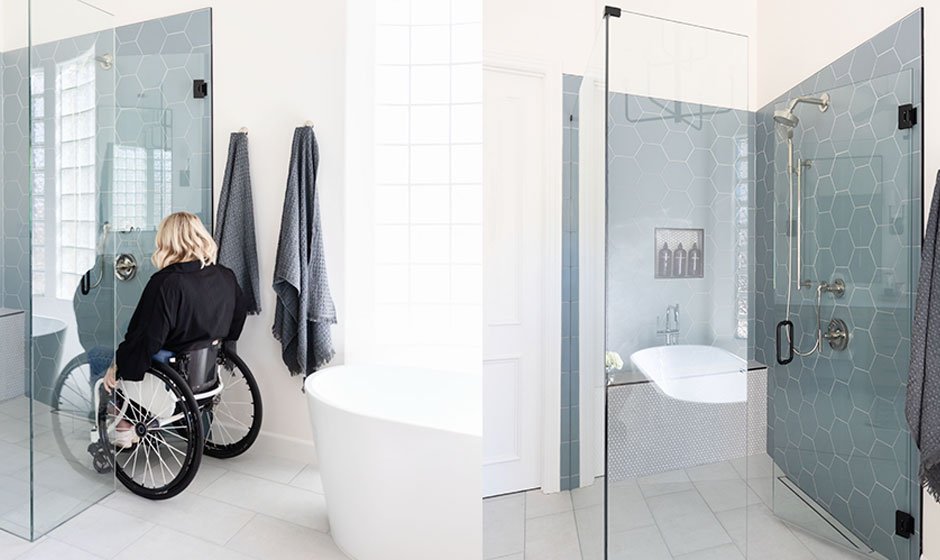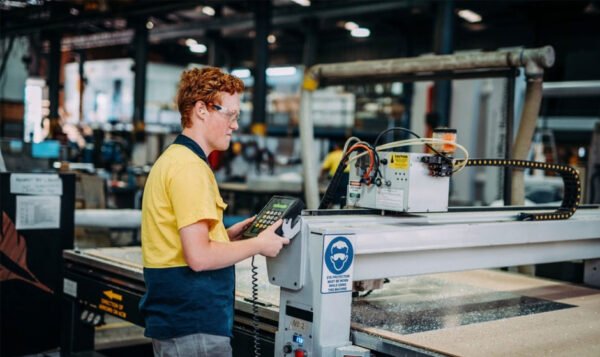Top 8 Accessible Home Design Trends for Disabled Individuals

Designing a home that is not only aesthetically pleasing but also inclusive and accessible is a noble endeavour. For those with disabilities, a thoughtfully designed living space can significantly enhance daily life and foster independence. In this blog post, we’ll explore the top eight accessible home design trends that are revolutionising the way we approach interior spaces, ensuring they cater to the diverse needs of disabled individuals.
Universal Design Principles:
One of the foremost trends in accessible home design is the adoption of universal design principles. This approach seeks to create environments that can be accessed, understood, and used by people of all abilities. By prioritising features such as wide doorways, open floor plans, and zero-step entrances, homes become more navigable for individuals using wheelchairs or other mobility aids. Universal design promotes inclusivity, making spaces welcoming to everyone, regardless of physical abilities.
Multi-Functional Spaces:
An emerging trend in accessible home design is the creation of multi-functional spaces. For individuals with disabilities, a flexible living environment can adapt to their evolving needs. Consider incorporating furniture and design elements that serve dual purposes – for example, a dining table that can be adjusted in height or a living room that easily transforms into a guest bedroom. These adaptable spaces provide practical solutions for those with varying mobility requirements.
Smart Home Technology:
The integration of smart home technology has transformed accessibility in residential design. Voice-activated controls, automated lighting, and temperature adjustments can be life-changing for individuals with physical disabilities. Smart home devices not only enhance convenience but also contribute to increased independence by allowing residents to manage their living environment with ease. This trend aligns with the growing importance of technology in creating inclusive spaces.
Accessible Bathrooms:
Bathroom design is a crucial aspect of accessible home planning. Barrier-free showers, grab bars, and adjustable shower heads are just a few features that can make a significant difference for individuals with disabilities. Non-slip flooring and easily reachable storage solutions further contribute to the creation of a safe and accessible bathroom environment. Designing bathrooms with accessibility in mind ensures that these spaces are functional and comfortable for everyone.
Inclusive Kitchen Designs:
The heart of every home, the kitchen, is witnessing a shift towards more inclusive design. Accessible kitchen designs focus on features like lowered countertops, pull-out shelves, and easily accessible appliances. Thoughtful placement of switches and controls, as well as open spaces beneath sinks and stovetops, allows individuals with disabilities to navigate and utilise the kitchen with greater ease. These adaptations not only enhance functionality but also promote independence and inclusivity.
Technologically Advanced Assistive Devices:
Advancements in assistive technology have opened up new possibilities for accessible home design. From motorised adjustable countertops to smart home systems that can be controlled via mobile devices, technology is playing a pivotal role in making homes more user-friendly. These innovative devices cater to a wide range of disabilities, addressing specific needs and ensuring that individuals can interact seamlessly with their living spaces.
Thoughtful Colour and Contrast:
Consideration of colour and contrast is a subtle yet impactful trend in accessible home design. High-contrast colour schemes can aid individuals with visual impairments in distinguishing different elements within a space. This includes using contrasting colours for walls, furniture, and other design elements. Additionally, thoughtful lighting design can significantly improve visibility for those with low vision. Creating a well-lit and contrast-rich environment contributes to a more accessible and welcoming home.
Outdoor Accessibility:
The concept of accessibility extends beyond the confines of a home’s interior. Outdoor spaces are gaining attention in accessible home design, with a focus on creating inclusive gardens, pathways, and seating areas. Ramps and gently sloping walkways ensure that outdoor spaces are accessible to individuals with mobility challenges, particularly if you rely on a walking stick or zimmer frame. Comfortable and adaptable outdoor furniture further enhances the usability of these areas, encouraging residents to enjoy the full extent of their living environment.



